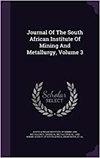煤矿井下火灾救援方法综述:以南非为例
IF 0.9
4区 材料科学
Q3 Materials Science
Journal of The South African Institute of Mining and Metallurgy
Pub Date : 2022-06-10
DOI:10.17159/2411-9717/1738/2022
引用次数: 2
摘要
煤炭开采采用地表和地下两种方法,其开采通常具有许多危险,这些危险可能导致灾难性事故,从而造成破坏性影响,如人员伤亡、采矿资产损坏和矿产资源破坏。这些危险的存在是由于煤支持燃烧的能力及其与有毒、易燃和爆炸性气体的关联。地下煤矿开采比露天煤矿开采具有更高的安全风险,主要是因为与矿井通风和矿井坍塌有关的问题。此外,煤矿坍塌主要是由于采矿支架的坍塌,尤其是在房柱采矿系统中。为了避免此类不良事件的发生,需要建立安全管理系统。本研究利用从南非卡尔顿维尔矿山救援服务公司获得的数据,回顾了在地下煤火中,特别是在南非,用于矿工安全救援和自行逃生的各种技术安全系统和原则。审查结果表明,通过建立安全管理系统和鼓励工人遵守安全原则,在南非许多地下煤矿中,践行安全文化已成为优先事项。本文章由计算机程序翻译,如有差异,请以英文原文为准。
Overview of mine rescue approaches for underground coal fires: A South African perspective
Coal is mined by both surface and underground methods and its extraction is normally characterized by numerous hazards that can lead to catastrophic accidents, which result in devastating effects such as injuries or fatalities, damage to mining assets, and destruction of mineral resources. These hazards exist due to the ability of coal to support combustion and its association with toxic, flammable, and explosive gases. Underground coal mining entails higher safety risks than opencast coal mining, chiefly because of issues relating to mine ventilation and mine collapse. Furthermore, coal mine collapses mostly occur due to crumbling of mining supports, especially in room and pillar mining systems. To avoid such adverse occurrences, safety management systems need to be in place. This study reviews the various technological safety systems and principles that are used for safe-rescue and self-escape of miners in underground coal fires, particularly in South Africa, using data obtained from Mines Rescue Services in Carltonville, South Africa. The outcome of the review shows that practising safety culture has been given priority across many South African underground coal mines through setting up safety management systems and encouraging workers to stay committed to safety principles.
求助全文
通过发布文献求助,成功后即可免费获取论文全文。
去求助
来源期刊
CiteScore
1.50
自引率
11.10%
发文量
61
审稿时长
4-8 weeks
期刊介绍:
The Journal serves as a medium for the publication of high quality scientific papers. This requires that the papers that are submitted for publication are properly and fairly refereed and edited. This process will maintain the high quality of the presentation of the paper and ensure that the technical content is in line with the accepted norms of scientific integrity.

 求助内容:
求助内容: 应助结果提醒方式:
应助结果提醒方式:


